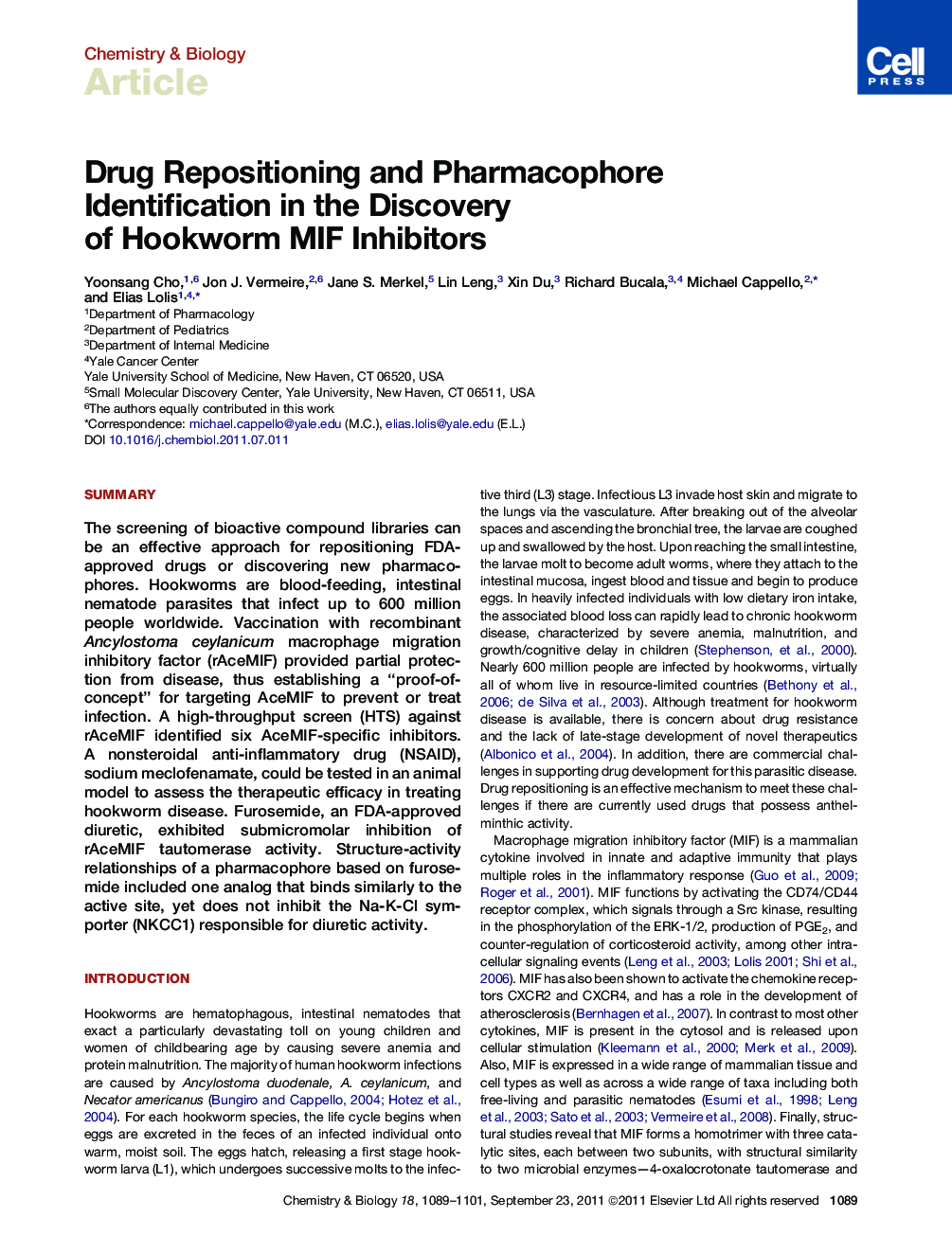| Article ID | Journal | Published Year | Pages | File Type |
|---|---|---|---|---|
| 1391388 | Chemistry & Biology | 2011 | 13 Pages |
SummaryThe screening of bioactive compound libraries can be an effective approach for repositioning FDA-approved drugs or discovering new pharmacophores. Hookworms are blood-feeding, intestinal nematode parasites that infect up to 600 million people worldwide. Vaccination with recombinant Ancylostoma ceylanicum macrophage migration inhibitory factor (rAceMIF) provided partial protection from disease, thus establishing a “proof-of-concept” for targeting AceMIF to prevent or treat infection. A high-throughput screen (HTS) against rAceMIF identified six AceMIF-specific inhibitors. A nonsteroidal anti-inflammatory drug (NSAID), sodium meclofenamate, could be tested in an animal model to assess the therapeutic efficacy in treating hookworm disease. Furosemide, an FDA-approved diuretic, exhibited submicromolar inhibition of rAceMIF tautomerase activity. Structure-activity relationships of a pharmacophore based on furosemide included one analog that binds similarly to the active site, yet does not inhibit the Na-K-Cl symporter (NKCC1) responsible for diuretic activity.
Graphical AbstractFigure optionsDownload full-size imageDownload high-quality image (260 K)Download as PowerPoint slideHighlights► Target verification of hookworm MIF by vaccination study ► Identification of six specific inhibitors of hookworm MIF tautomerase activity ► Characterization of inhibitors against receptor binding and biological properties ► A FDA-approved NSAID is a candidate for hookworm disease ► An FDA-approved diuretic and nondiuretic structural analog were cocrystallized with AceMIF for lead optimization studies
